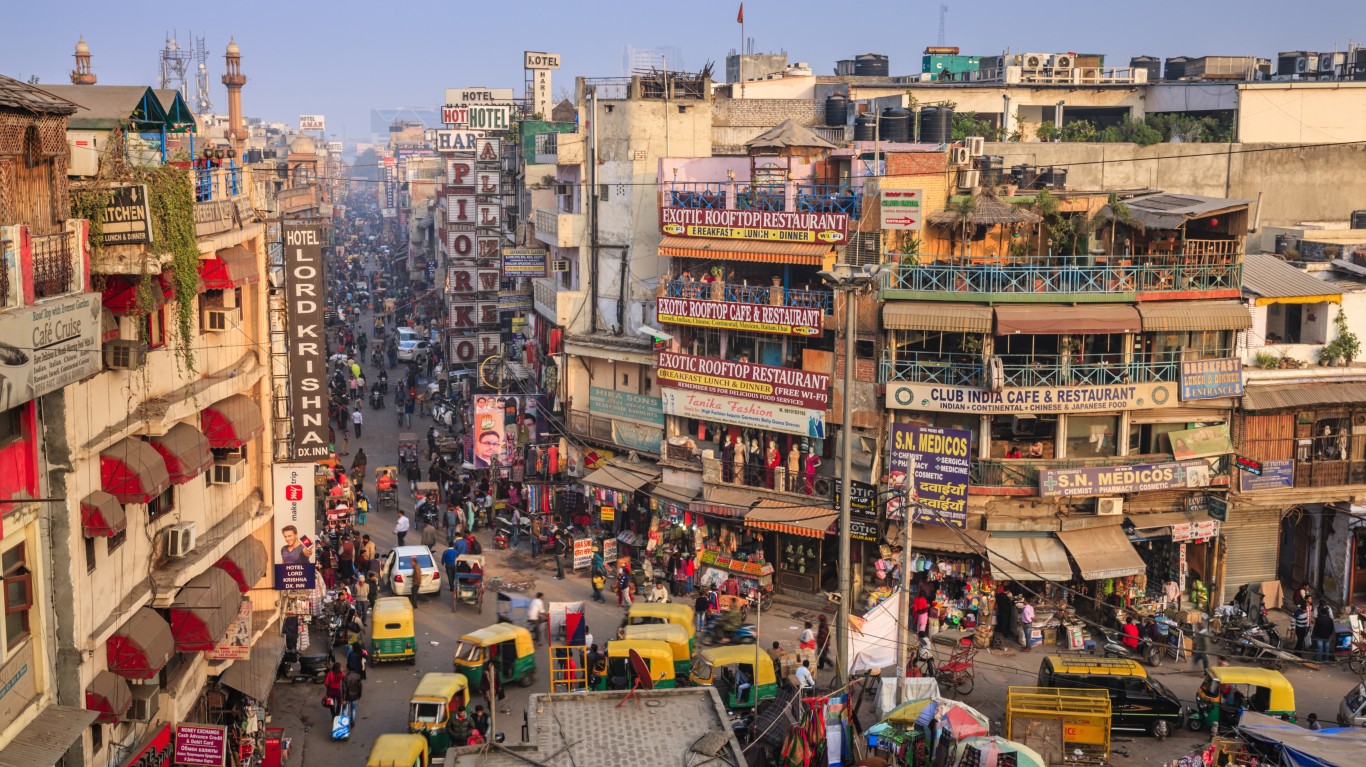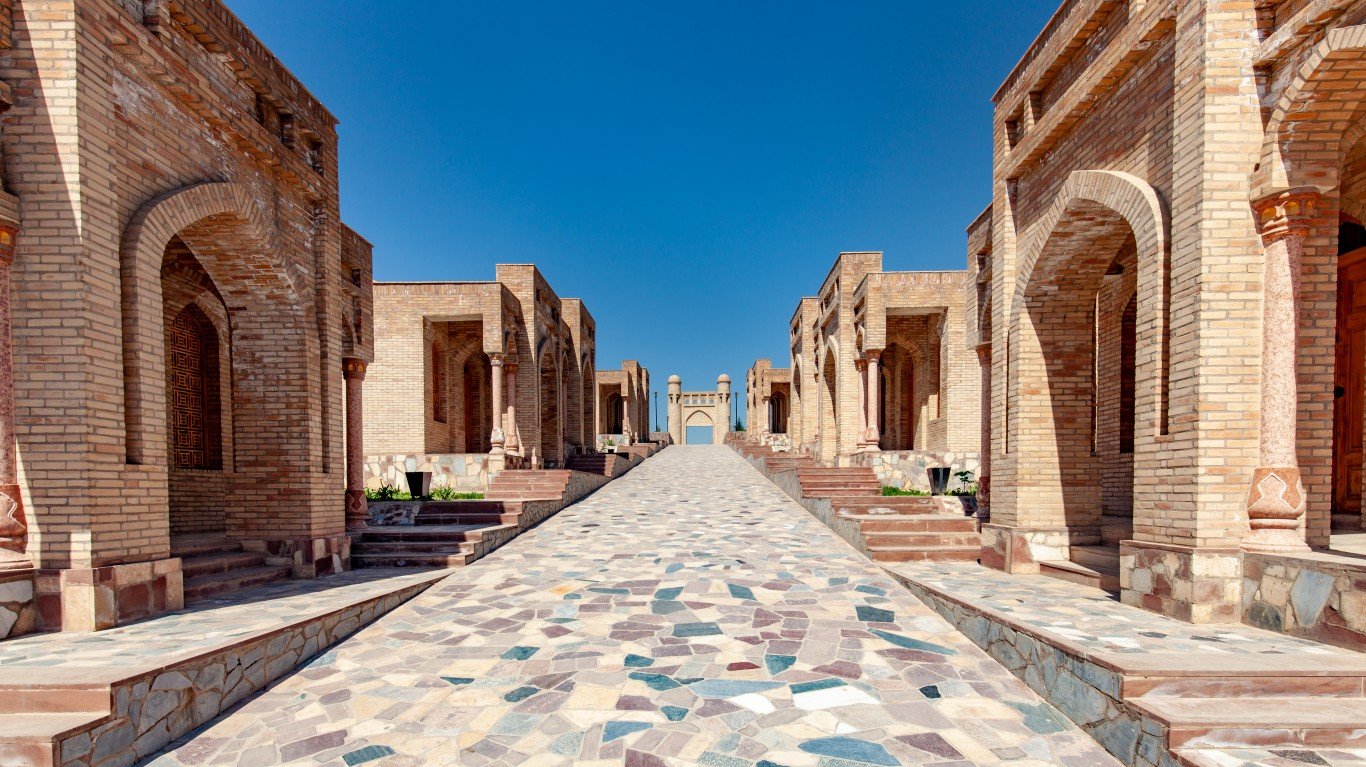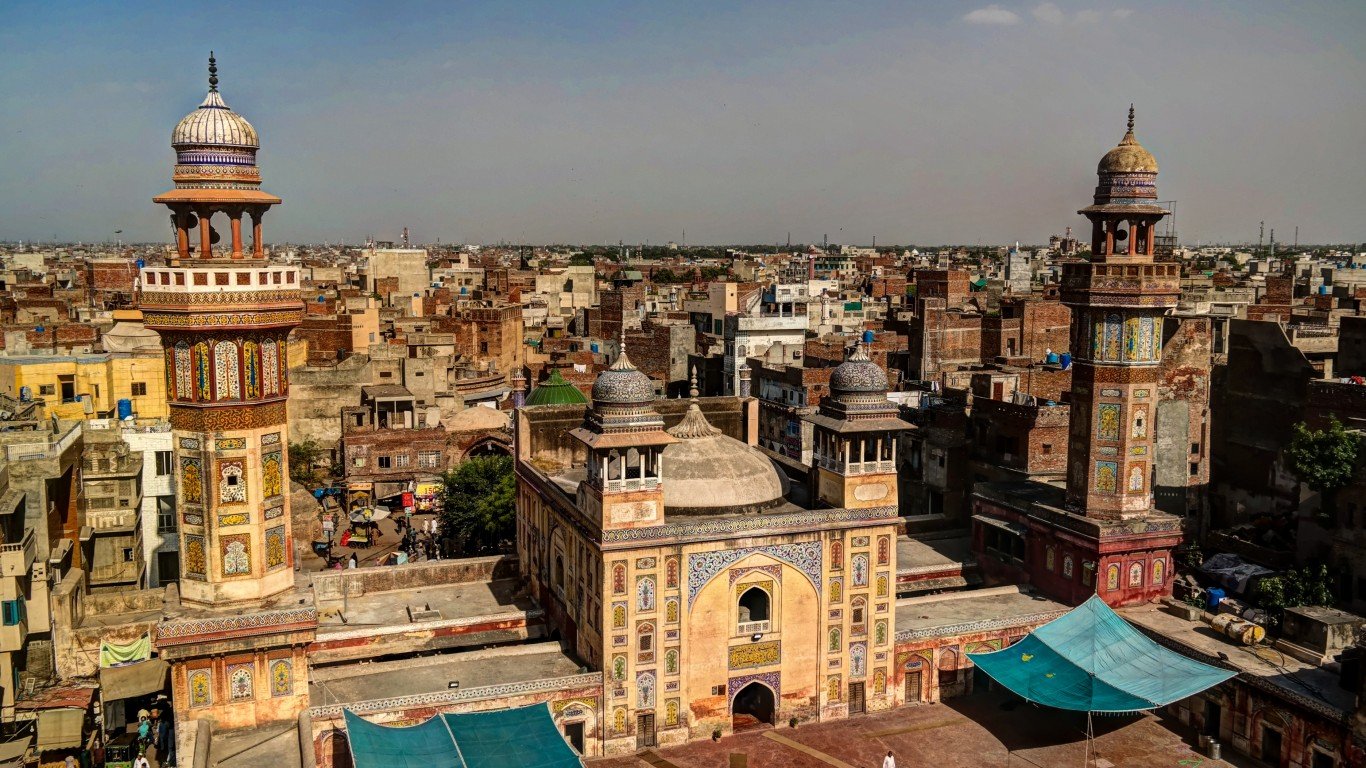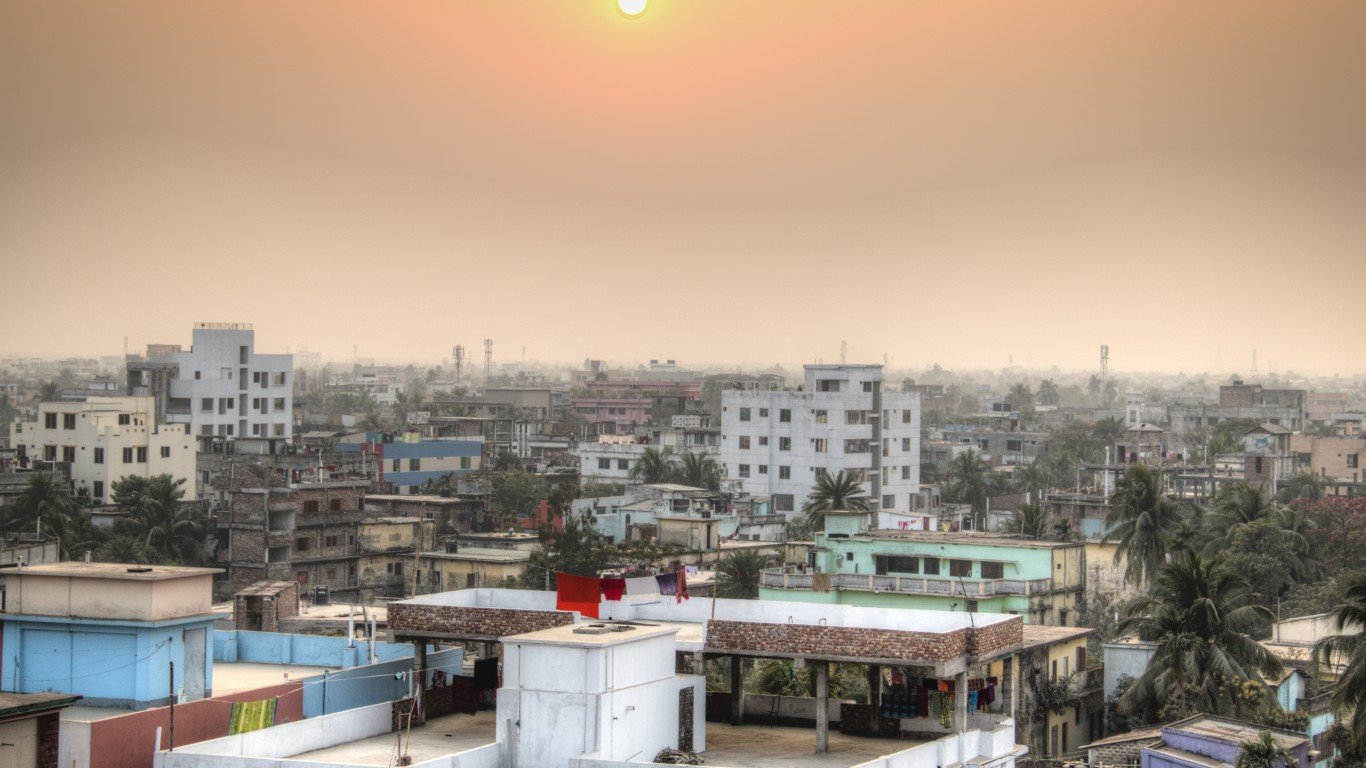
5. India
> PM2.5 concentration: 58.1 μg/m³
> Total population 2020: 1,380,004,385
India might not have the world’s worst air pollution (at least in terms of PM2.5 concentration levels) but its dismal air quality arguably impacts the largest number of people. India’s population is smaller than China’s by 31 million people, but its largest and densest cities experience more days of horrific smog.
In November, most of New Delhi recorded an air quality index reading above 500, and in some locations the reading hit the maximum measurable level of 999, caused by Diwali holiday revelers violating a citywide ban on fireworks. When AQI readings rise above 300, all people are advised to avoid all outdoor physical activity.

4. Tajikistan
> PM2.5 concentration: 59.4 μg/m³
> Total population 2020: 9,537,642
Tajikistan has the worst air quality of Central Asian countries, by a considerable margin, and its air pollution levels have doubled since 2020. Besides motor vehicle emissions, contributors to this problem include emissions from aluminum processing plants. Air quality in the country’s capital Dushanbe is expected to deteriorate further as the country builds more coal-fired facilities to boost power and industrial production.

3. Pakistan
> PM2.5 concentration: 66.8 μg/m³
> Total population 2020: 220,892,331
Pakistan is the largest of the world’s three countries with the worst air quality. In Lahore and Karachi, air quality index measurements routinely top 300, the threshold at which health officials recommend all people avoid outdoor activity. Trash burning is a major contributor to poor air quality in Pakistan

2. Chad
> PM2.5 concentration: 75.9 μg/m³
> Total population 2020: 16,425,859
Chad has much worse urban air quality than the other two African countries on this list. Contributing to the problem are primarily the oil, textile, and meat-processing industries. Exposure to outdoor particulate matter and household air pollution from the widespread use of wood- or coal-burning stoves was determined to be the third-leading health risk after malnutrition and poor sanitation in 2017, according to the State of Global Affairs website.

1. Bangladesh
> PM2.5 concentration: 76.9 μg/m³
> Total population 2020: 164,689,383
Urban sprawl, construction, a lack of centralized pollution-mitigation management, lax regulation, and high levels of airborne pollution blowing in from nearby Indian coal mining operations are the largest contributing factors to Bangladesh’s growing air quality crisis. The country’s air pollution is estimated to have jumped by 10% last year compared to the previous year, according to the 2021 World Air Quality Index report.

 24/7 Tempo
24/7 Tempo




